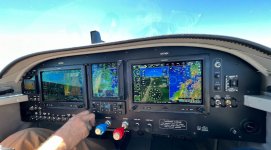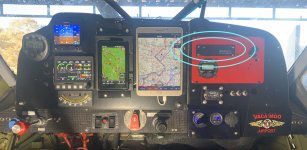1. Other
2. Straightforward. Calibration is automated, resulting in standard cues from airplane to airplane, regardless of type. A single deceleration run from Vmax to Vstall is flown at each flap setting (up to 5) and the system calibrates maneuvering angle (AOA associated with maneuvering speed), L/Dmax, on speed (Vapp and a 0 Ps [used as a maneuvering reference]), and stall. Calibration is optimized to increase dynamic accuracy of the system (i.e., better AOA during maneuvering flight or flight under turbulent conditions). An on speed band of +/- 1 deg is calculated, which results in a speed band of +/- 2 kts from a precise on speed condition at 1 G that correlates with 1.25 to 1.35 Vs. 2 degrees of stall warning is provided, which results in 5 kts of warning at 1.4 G's in a sustained 45 degree bank.
3. Yes. Instrumented flight test shows an accuracy of ½ degree or less error from actual AOA and a transient response accuracy of 1 degree or less up to six Gs at 20 degrees of yaw or less (with a spherical sensor) or 6 degrees or less (non-spherical sensor). The physics used to achieve this level of performance are described in this paper
https://www.tc.faa.gov/its/worldpac/techrpt/tc18-7.pdf.
4. Yes. Here is a series of low G (less than 2) accelerated stalls that could occur in a normal traffic pattern, including some skidding and slipping departures from controlled flight. My airplane lacks buffet cues at 2Gs or less, so I'm dependent upon the progressive stall warning at low G. Note how airspeed is essentially constant during the accelerated stalls. The last test is interesting, it's a sustained series of oscillating stalls with yaw present--a relatively demanding scenario for any AOA system:
https://youtu.be/ymQqkHbHEPE. Listen to the tone and watch the conventional military indexer (AOA visual display) as the airplane momentarily looses then regains stability during the series. "Perch" is a USAF expression for the point in the traffic pattern where you start the base turn. Since the flight envelope is defined by aerodynamic, structural and airspeed limits, it is also handy to know when approaching ANY of those limits including G limits adjusted for asymmetric maneuvering (rolling G). In addition to stall, it’s handy to know when the airplane is at maximum structural cruising speed, at or below corner velocity (maneuvering speed adjusted for gross weight), at L/Dmax (best range glide, approximate best rate of climb, maximum range), on speed (approach and landing, maximum endurance glide, maximum sustained turn rate for a given power setting) and "fast" or “slow” relative to that optimum condition.
5. Yes. I find the audio trend information helpful for aircraft handling, including approach and landing. The system is sufficiently accurate and responsive that it is practical to fly the airplane without airspeed or G references.
v/r,
Vac










